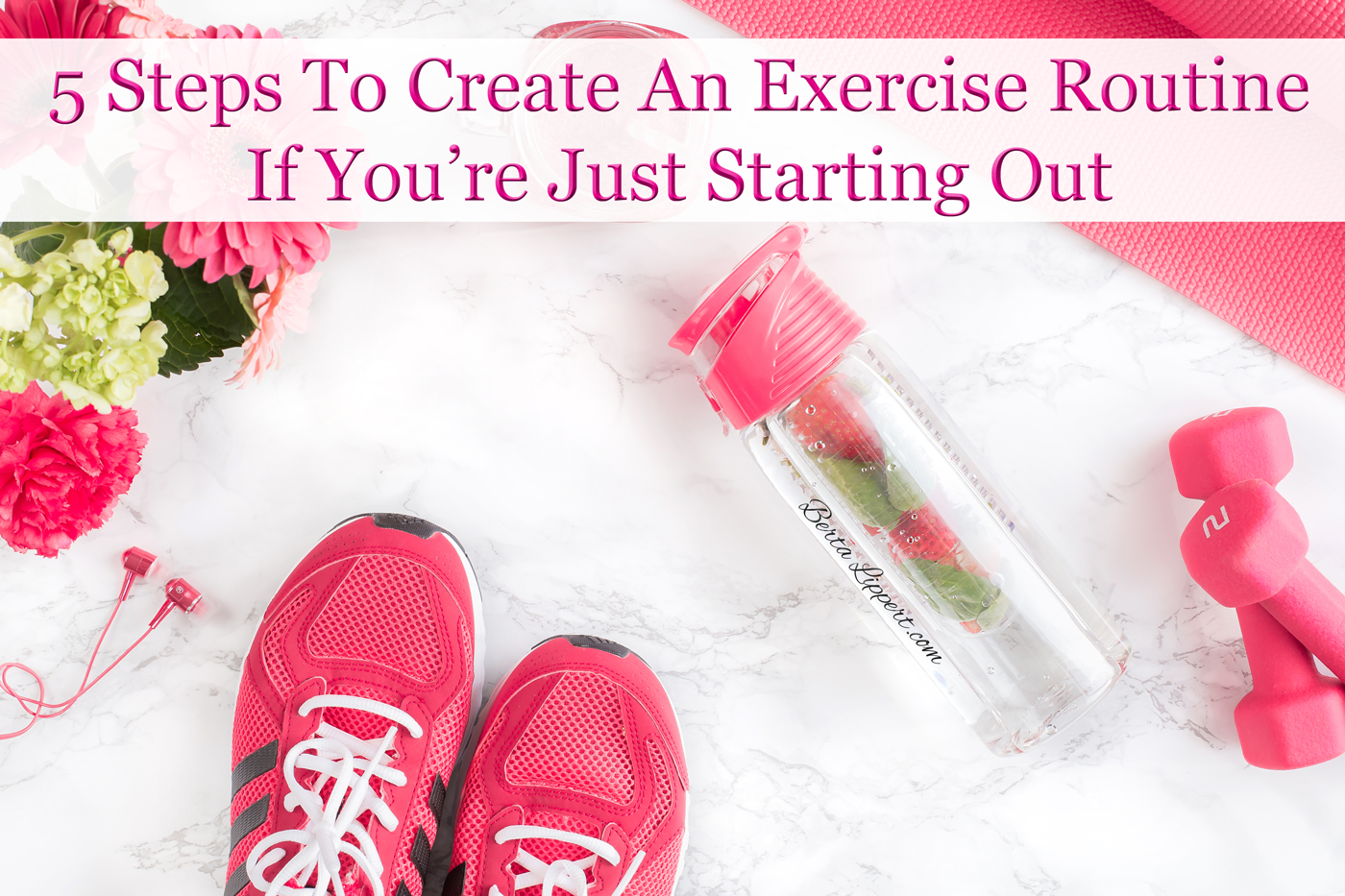
Would you like to be more active, get fit, and exercise more? If not, you’re not alone! I mean of course people would love to be more active, get fit, and exercise more. But the reality is, the majority of people don’t get anywhere near the recommended amount of exercise each week, so the mere thought of it can be daunting. Especially if you haven’t been exercising regularly for quite some time.
If you’re in that boat, I’m here to share some good news with you today! It doesn’t have to be that hard, and it can actually be enjoyable. Yup! You heard me. Your body can experience health benefits from activities you actually enjoy. Don’t enjoy running on a treadmill? Then don’t. Don’t enjoy hanging around a bunch of overinflated egos grunting at the gym? Then don’t. By the way, my gym isn’t like that, so it may simply be a matter of finding a gym with a more suitable climate if you feel that way. My point is, being active, getting fit, and exercising more, does NOT have to include any form of activity or exercise you don’t enjoy. You can get a great workout in dancing, or gardening, or many other actives and exercise you do enjoy. More on that later.
How much does it take?
To start, I’d like you to understand just how much time we’re actually talking about here. Just how much time do we need to experience the benefits of exercise and activity? To help answer that question, I researched numerous guidelines and recommendations including those from The American Heart Association, The Department of Health & Human Services, The Centers for Disease Control & Prevention (CDC), The American Cancer Society, The National Institutes of Health, Mayo Clinic, and The American College of Sports Medicine (ACSM), among others. You all know how I looooove my research! I wanted to be really clear on what it would take for the average person to experience health benefits of exercise and activity, such as maintaining a healthy weight, preventing heart disease, stroke, diabetes, depression, and even some cancers, in addition to increased energy, better sleep, and reducing stress. The health benefits are plenty, and they are enormous.
So here’s what it boils down to. Consistently across the board, it’s recommended that we get the following amount and types of exercise.
150 minutes/week of moderate aerobic activity (2 and 1/2 hours a week)
or
75 minutes/week of vigorous aerobic activity (1 and 1/4 hours a week)
PLUS
Strength training all major muscle groups 2x/week.
Keep in mind that these are the minimum recommendations. Research shows you’ll experience even more health benefits if you do more than 150 minutes a week. You can learn more about this here. But let’s start with the minimum amount for now to get you started.
What does aerobic activity and strength training mean?
Let’s take a look at each of these to give you a better understanding of what this all means, and more importantly, how you can simplify it.
Aerobic activity is an activity that will increase your heart rate at a moderate pace such as a brisk walk, or a household chore such as mowing the lawn.
Vigorous activity takes things up a notch by increasing the demands on your body with activities such as running, jumping rope, or playing singles tennis.
For more information on what constitutes the various intensity of exercise, check out the CDC and ACSM guidelines, General Physical Activities Defined by Level of Intensity, here.
Strength training is an activity that requires your muscles to withstand a greater demand strength wise, such as body weight exercises, weight machines, using resistance bands, or other strength activities such as rock climbing.
For more information, including sample weekly workout plans to get the recommended activity, check out the Physical Activity Guidelines from the U.S. Department of Health & Human Services here.
In addition to the cardiovascular and strength exercise mentioned above, organizations such as the American College of Sports Medicine, places guidelines for other facets such as flexibility and neuromotor exercise that requires balance. While these are important aspects of fitness, especially as we age, we’re going to focus on the two aspects heavily tied into a ton of research as it relates to disease, which are aerobic and strength. For more information on the recommendation for flexibility and neuromotor exercises related to balance, visit ACSM website here.
What would this look like?
Now let’s take a look at how this might actually look if you were to incorporate it into your day. The good news is there’s some flexibility into how this may unfold for each one of us. And there’s growing evidence that it doesn’t have to be done all in one sitting. Mounting research shows that 2-3, 10 to15 minutes bouts of exercise allows us to experience health benefits. In fact, the National Institutes of Health says that sedentary people can experience health benefits with as little as 60 minutes a week. You’ll experience more with additional exercise of course, but the fact is, is that SOME exercise or activity is better than NONE.
Another important distinction to make is that it doesn’t have to be exercise in the form you may be thinking. I always refer to this to my clients as exercise AND activity. Because being active counts. Every last bit of it. You can experience many health benefits from activities you enjoy outside of the gym. There’s a lot of flexibly in what constitutes exercise. The American Cancer Society is quick to point out that physical activity is anything that makes your move your body and burn calories. So that little shimmy you do listening to your favorite song, YUP! It counts! Keep doing it! :)
So how do I start?
My advice? Start small. In this video I filmed above, I shared an inspiring story of a woman who was abused as a child and grew up to become obese as she struggled coping with the abuse. She overcame enormous challenges, which included a lot of weight lost, by simply walking one block each day to start. Each day she would lace up her shoes, head out the door, and walk to the end of the block and back. That was it. But that was enough to change the entire trajectory of her life. So start small my friend. Start somewhere.
I recommend you find an activity you enjoy, and set a goal that may appear ridiculously easy at first — one that you are absolutely certain that you can do. What you’re doing is creating the healthy habit of setting aside time to exercise. A healthy habit that can last a lifetime. And that’s the goal here. You want to experiment to find an activity you enjoy, because that will be sustainable, and as I mentioned earlier, enjoyable. Gasp! It’s true! :) So start small, and build your way up to the recommended amount of exercise each week.
STEP INTO YOUR MOMENT & TAKE ACTION: A 5 Step Plan To Create An Exercise Routine If You’re Just Starting Out
Step 1: Brainstorm a list of activities you enjoy. Set your timer on your phone for 2 minutes and keep writing. You may very well remember an activity you used to enjoy that you completely forgot about. Write it down! Write them all down! :)
Step 2: Pull out your calendar and schedule a block of time, maybe 5-10 minutes, to do an activity you identified in step 1. Start with just one day if that’s all you can handle right now. Remember what I said above, SOME exercise is better than NONE.
The biggest thing here to remember, is to start small. Schedule an amount of time that is absolutely doable, and dare I say, easy. The main focus is to build the healthy habit of activity and exercise. Focus on frequency for now. You can increase the intensity and duration later.
Step 3: Start somewhere. Honor the commitment you’ve made to yourself in step 2, and follow through. If you’d like an accountability buddy, just post in my community, Destination Angel, of over 5,000 like minded people and we’ll be happy to support you! You can find us on Facebook here.
Step 4: If you have a set back, don’t worry. It’s common and almost expected when you’re trying to create a new healthy habit. Right now create a game plan for what you’ll do if you have a set back. Who will you call? What will you read or watch to inspire you to take action? How will you get yourself back on track? I want you prepared ahead of time, so if it happens, you’re ready!
Step 5: Celebrate you’re wins! Every last one of them. Watch this video I filmed here, to show you an incredibly easy, yet effective way to do this.
Okay, are you ready? Let’s do this! Start small. Start somewhere. You’ve got this!
love, b

